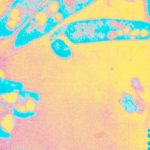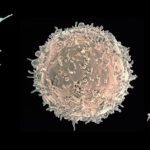Présentation
Mycobacterium ulcerans causes Buruli ulcer, a neglected tropical skin disease manifesting as chronic wounds that can leave victims with major, life-long deformity and disability. Differently from other mycobacteria, including the related M. tuberculosis and M. leprae pathogens, M. ulcerans produces a diffusible lipid toxin named mycolactone. In addition to being cytopathic, mycolactone displays unique and potent inhibitory effects on the immune system. Both properties, immunomodulation and cytotoxicity, result from mycolactone binding to- and inhibiting Sec61, the entry point of the secretory pathway in eukaryotic cells. By inhibiting Sec61, mycolactone prevents the host cell’s production of secreted proteins, and most of its transmembrane proteins. While not only affecting the immune system, this molecular blockade efficiently prevents immune cell functions, thereby the generation of protective immunity against M. ulcerans. Notably, sustained inhibition of Sec61 ultimately triggers apoptosis in most cell types through induction of proteotoxic stress responses, and cell death associated with release of pathogen-associated molecular patterns potently stimulate cellular immune responses.














